Vulcan V2: Rapid Batch Modelling
Background
We recently rebuilt Vulcan V2 from the lessons of our V1 product. The Home Energy Model (HEM) moves from monthly to half-hourly simulations, unlocking better sizing and operational insight. The trade-off: HEM needs more input data than SAP.
In our last article, we showed how V2 makes HEM inputs faster with a defaults file for “difficult” inputs, and a simple CSV for remaining geometry inputs that is editable in Excel or Google Sheets, local file storage for easy workflow integration, and a visual floor-plan editor to cut data-entry effort and errors.
Vulcan V2 does more than streamline inputs. It also makes HEM more useful. This article explains how V2 enables rapid batch modelling: tools to spin up many scenarios from a base model with minimal extra work.
What we mean by “batch modelling”
Batch modelling means running many HEM models at once to explore how design choices (e.g. fabric properties, glazing ratios), permutations (e.g. location, orientation, external shading), and systems (e.g. space heating & cooling, ventilation, hot water) affect dwelling performance or compliance metrics.
Some typical uses:
- Pressure-testing housebuilder national archetypes: identify edge cases where targets are missed, or opportunities for capital efficiency.
- Assessing large developments: vary orientation and other parameters without rebuilding each dwelling from scratch.
- Assessing retrofit: test multiple upgrade paths for a single dwelling, including impacts of future weather and different occupant behaviours. Scenario modelling enables identifying optimal retrofit pathways.
- Increasing assessment value: deliver a calibrated model with a Part L or EPC assessment so occupants can make decisions on improvements, tariffs, and controls based on actual use.
Our goal: make it almost effortless to do batch modelling so assessors are more productive and create greater client value.
From Python prototype to Rust speed
HEM’s open-source Python code included a simple batch feature, likely used for QA and validation. We replicated and extended this in Rust.
- The Rust version of HEM will be used by ECaaS (Energy Calculation as a Service) for Building Regulations (e.g. Part L and EPCs).
- Runtime: ~5 seconds per model in Rust versus ~5 minutes in Python. That enables a dozen scenarios per minute.
- Result: batch modelling is practical for professionals and aligned with Building Regulations outputs.
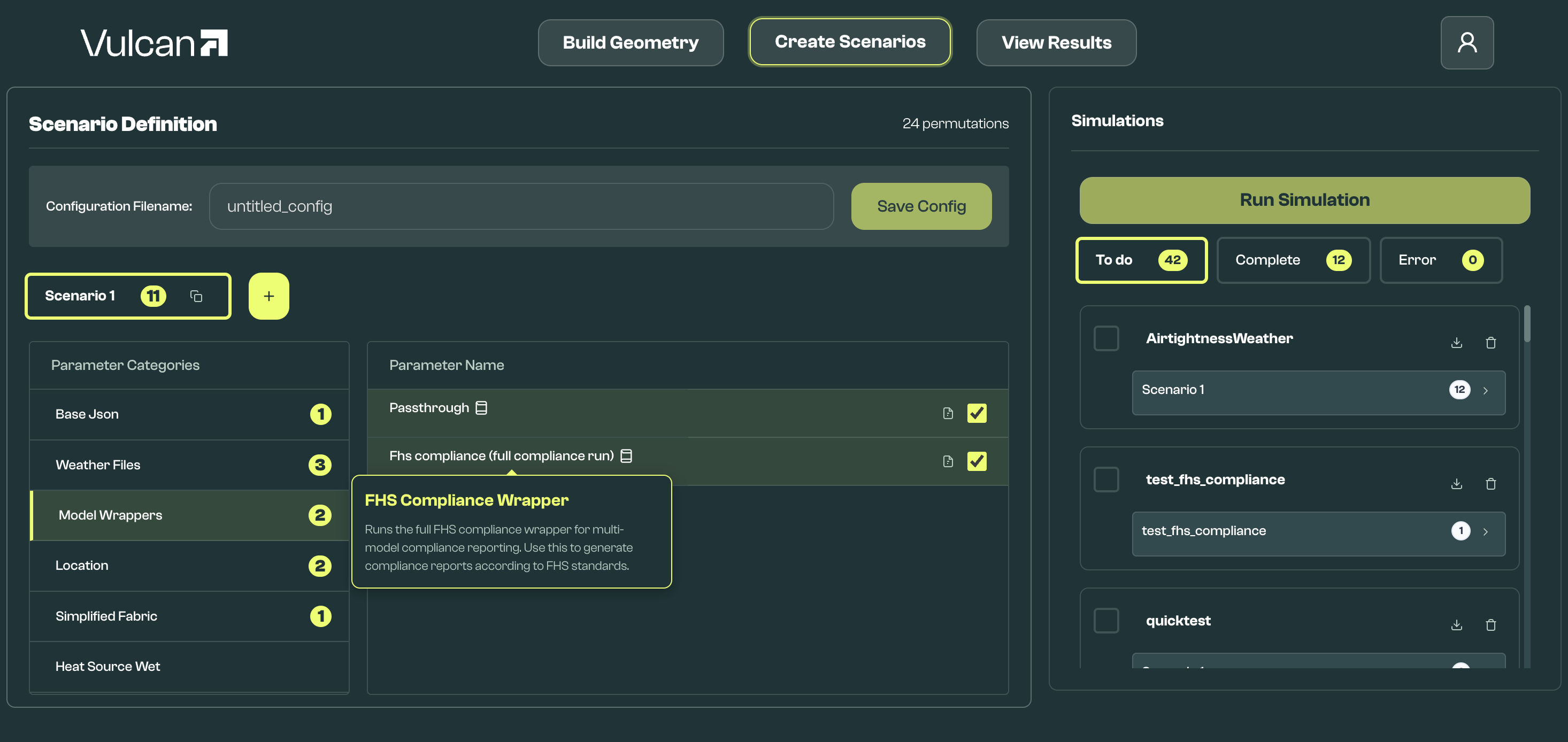
Powerful parameter selection and editing
We also expanded what you can vary:
- Run with the Future Homes Standard wrapper and/or without a wrapper (to enable custom controls, other inputs, and multiple zones).
- Orientation and glazing ratio (global or constrained to a specific wall).
- Systems and controls: heating, cooling, ventilation, emitters, and control strategies.
All of this is driven by a parameter library:
- We ship sensible defaults (drawn from HEM demo files) that you can update.
- When the updated PCDB (products database) is integrated, users will be able to access a full range of systems. We expect this before year-end.
- Users can create, duplicate and edit parameters, and validate these against the HEM input schema.
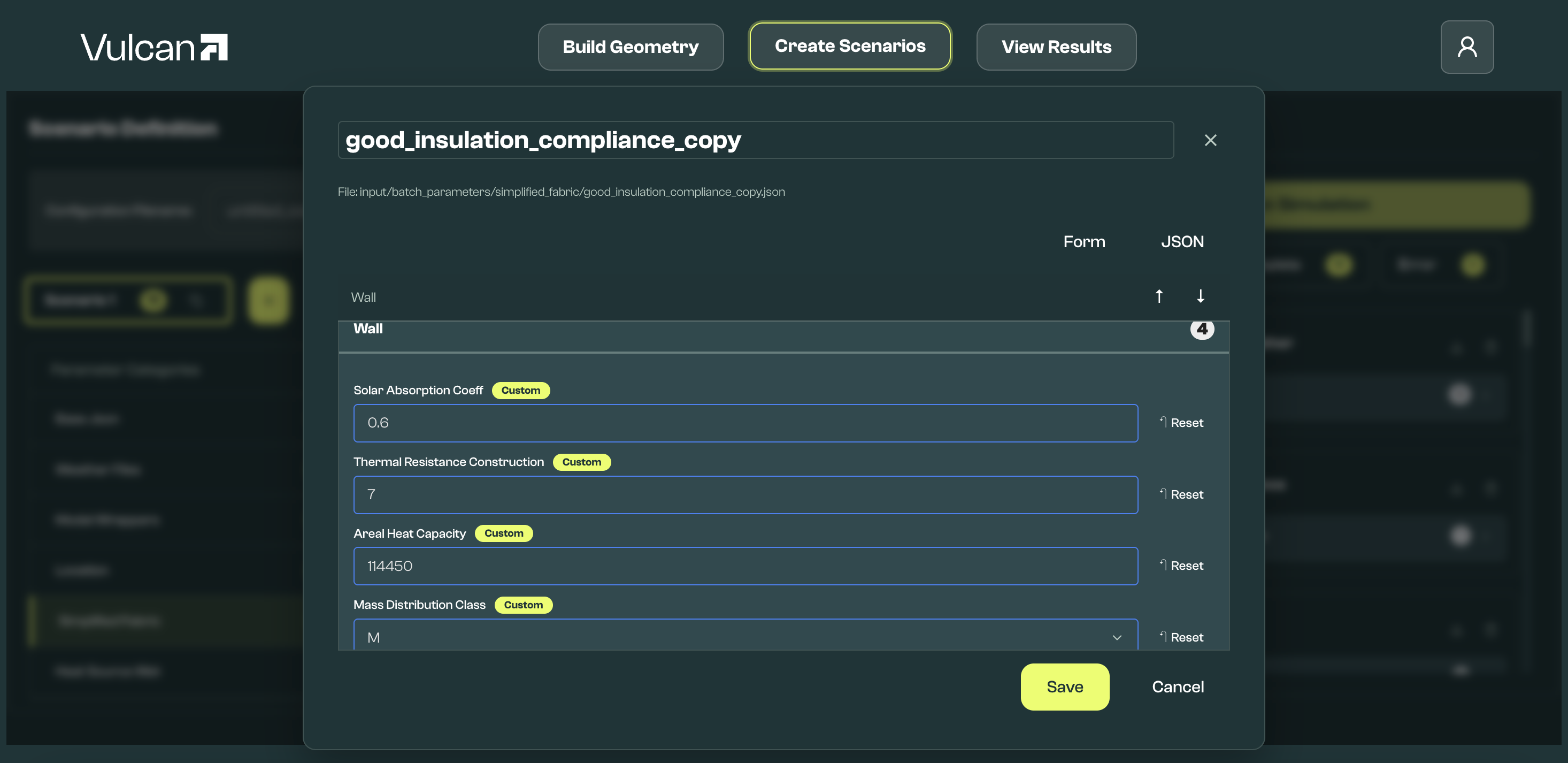
For fine-tuning, the scenario editor includes an inline editor for the base HEM JSON with schema validation and human-readable errors. Early adopters use this to import and update older HEM input files.
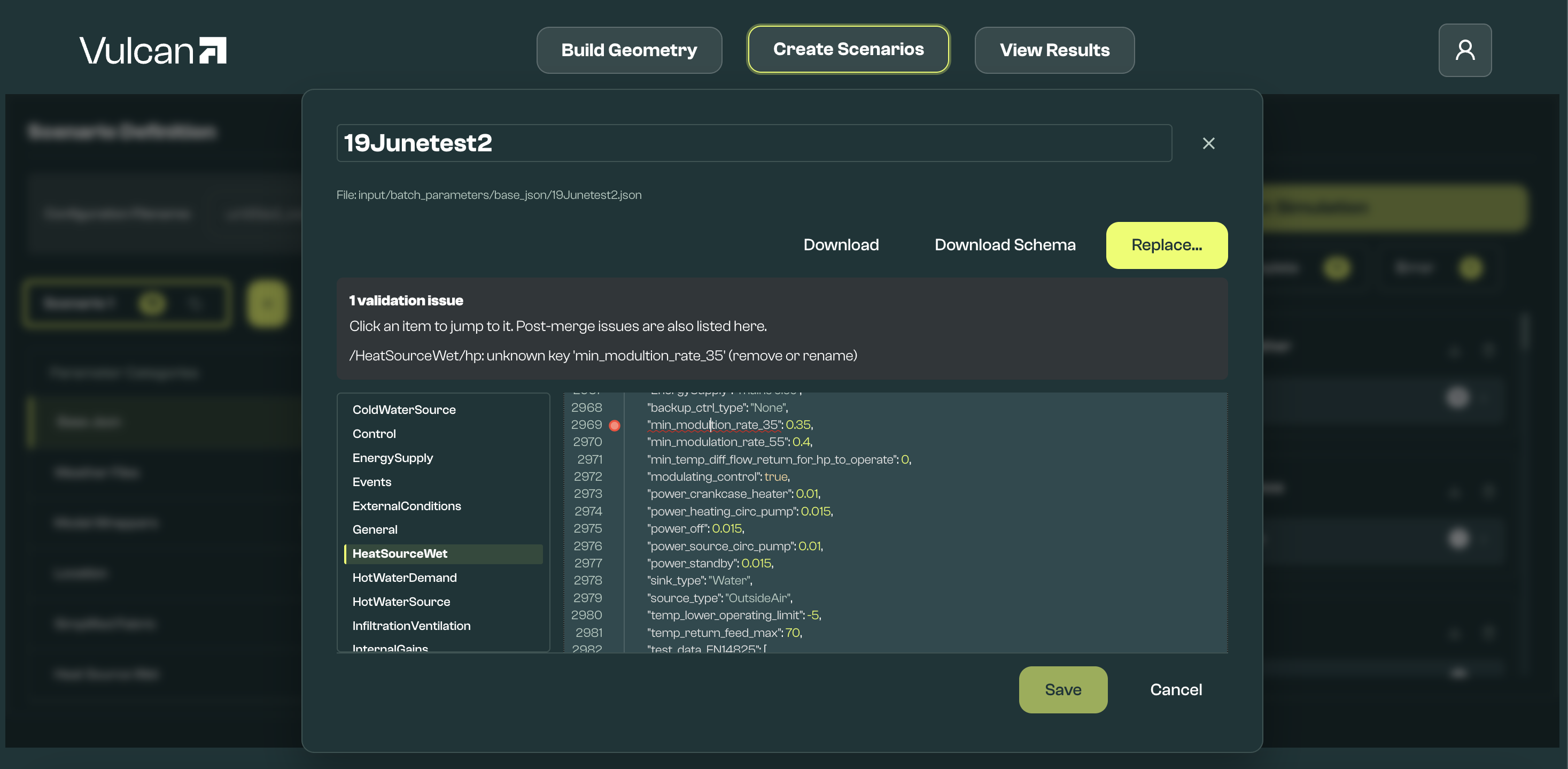
Background simulations so you can keep working
Batches run inside a Web Worker. In plain English: your browser uses your device’s CPU to run simulations in the background. This means:
- If you have a multi-core CPU (common for most computers), work spreads across cores. More powerful machines run HEM faster.
- Simulations don’t use the main thread, so you can run hundreds of models while continuing other tasks.
- You get the same results you would get from ECaaS, but computed locally. That removes limits on how many models you run and avoids per-scenario costs.
Visualise your data. Compare variable tariffs
When simulations complete, results stay on your computer. You can dig into outputs and integrate them into your own workflows.
Our visual viewer lets you compare models side-by-side with metrics you define:
- Metrics are stored as reusable configuration files.
- Supported functions: SUM, AVERAGE, SUMIF, AVERAGEIF, COUNTIF.
This enables many user-defined metrics:
- Count half-hour blocks per year where a zone exceeds 25 °C.
- Count blocks with unmet space-heating demand.
- Sum hot-water consumption across any period.
For Future Homes Standard wrapper simulations, you can also see whether Fabric Energy Efficiency and other compliance metrics pass the Notional Building standard.
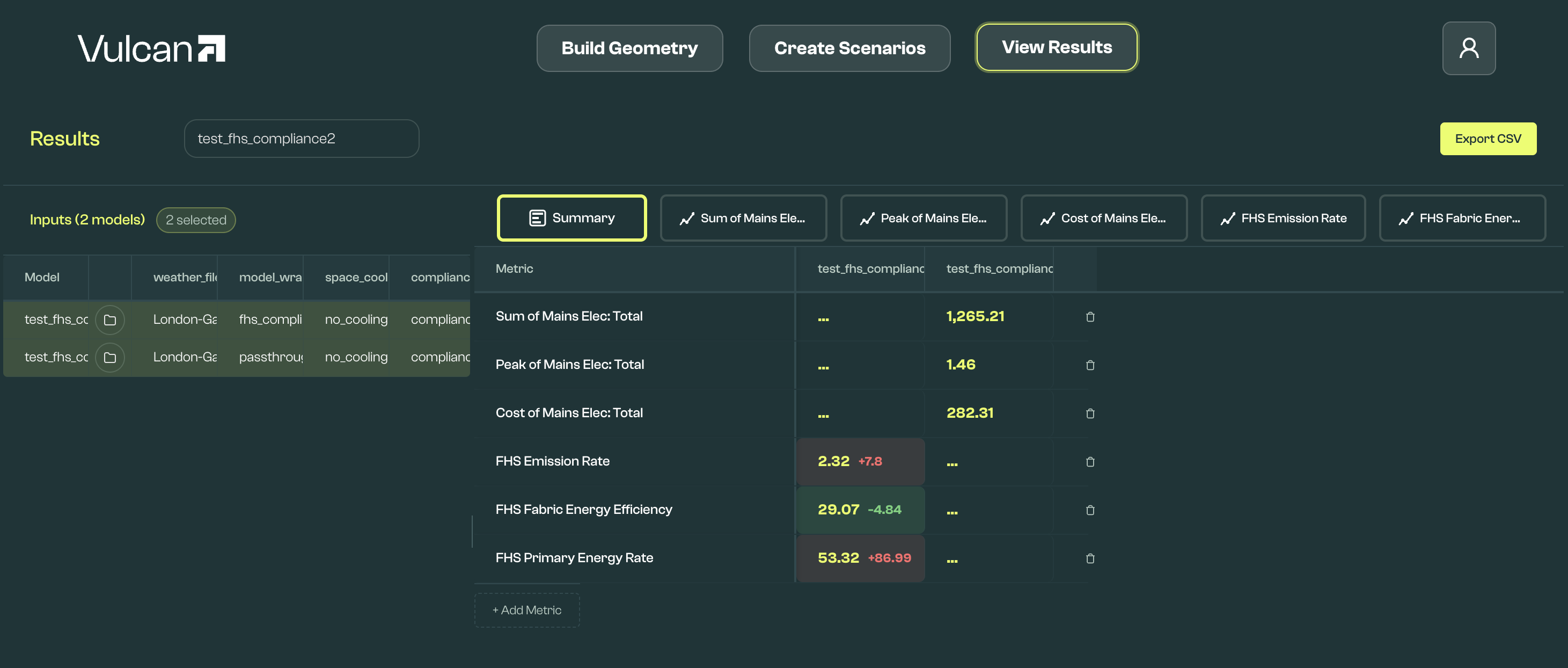
You can also inspect annual graphs for each metric. In these graphs you can compare multiple models per graph, and zoom for detail (and time period metrics).
We also enable cost analysis using half-hourly tariff data. (We chose Octopus as they are the UK’s largest energy retailer and provides an API for all tariffs.)
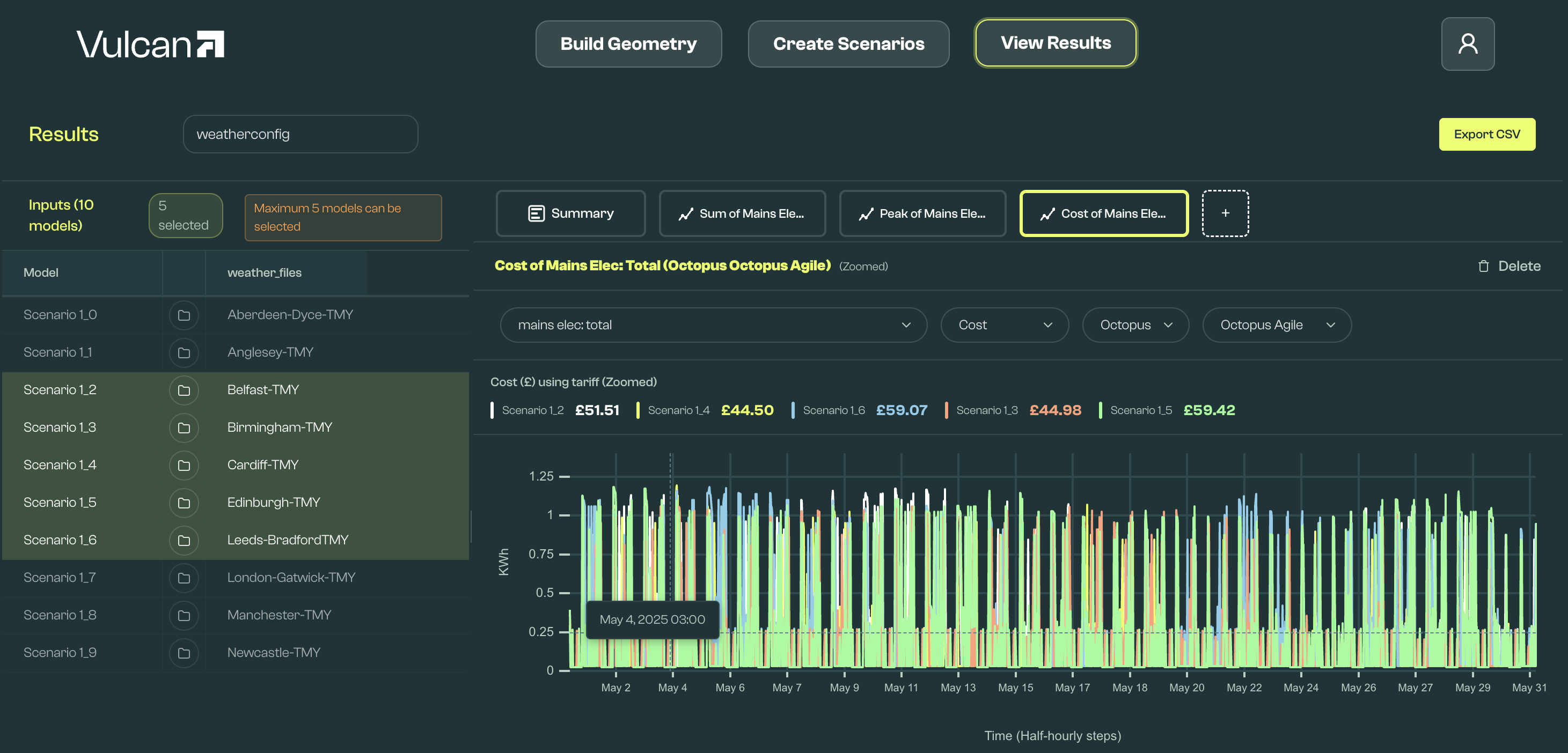
Who benefits from batch modelling?
Batch modelling is ideal for the first wave of HEM use:
- Housebuilders: assess archetypes under the Future Homes Standard; test design changes that reduce the cost of Part L compliance or support commercially attractive “Zero Bill”-style propositions.
- Energy assessors: bolt on performance assessments to compliance work with minimal extra effort. Become a trusted design advisor, not just a final checker.
- Policy teams: run transparent sensitivity studies to understand incentives to adopt HEM over SAP, or to adopt specific systems.
- Energy retailers: evaluate tariff interactions, peak events driving system sizing, and operational risks (e.g. insufficient battery charge for flexibility events).
Get started
Vulcan is the best way to use the Home Energy Model - designed to reduce the effort of assessment work and increase value creation. Join the waitlist and we’ll reach out when you can start using Vulcan.
